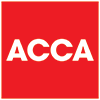Bounce Back Loan Scheme – why don’t we have the detail yet?
The new Bounce Back Loan Scheme (BBLS) was announced on Monday by Chancellor Rishi Sunak. In that announcement, he said that the new loans will be available from Monday 4th of May.
As yet we have no more details regarding the application process, the detail needed from business owners, the time scale to receive approval or the cash into your bank, the interest rate or many other points.
Why don’t we know more, when the scheme is due to open on Monday?
We understand that discussions are ongoing between HM Treasury and the banks and lenders, with the following being the key considerations of those discussions:
- Banks are currently inundated with applications for CBILS loans. As at Thursday, 30th April, 25,262 to CBILS loans worth £4.1 billion had been distributed. This equates to just 48% of the 52,807 applications submitted so far. Of the amounts paid out, the breakdown by banks is as follows:
- HSBC Bank 20% at £765.2m,
- Barclays 17% at £835m,
- Lloyds 15% at £500m
- RBS with 31% at £1.6bn
- The banks are governed by the Financial Conduct Authority (FCA), which currently has rules in place that lenders must be 100% sure that borrowers fully understand the terms of any loan. Lenders have regulatory duties to carry out affordability checks, which is where the time is currently being spent on the CBILS applications.
Loans can be cancelled under the Consumer Credit Act if the borrower doesn’t understand the implications of the agreement they’ve entered into, and banks’ senior managers can be personally liable if the affordability checks are not carried out effectively.
This could be resolved by guidance from the FCA, but would need to be followed up with a change in UK legislation. - Lenders are worried about their ability to adhere to the Chancellor’s pledge that funds will be received within 24 hours.
- The Treasury is expected to force a standard interest rate or to cap the loans at the end of the 12 month interest and capital free period. This is a new feature of the BBLS and does not apply to CBILS.
Lenders are collating their costings for consideration by HM Treasury, but at the moment it is thought that this rate could be below 3%. - The information requested as part of the application process could be a sticking point as far as affordability is concerned. A report said yesterday that information will be based on ‘that which banks already have in place’, but that seems unlikely to be sufficient to cover off the affordability concern.
If this is the case banks may, for example, be looking to approve a loan based on the last six months bank statements. - It is possible to convert a CBILS loan, up to the £50,000 limit of the BBLS loans, until the 4th November 2020. So if you have an existing CBILS and prefer the pricing and the rates and structure of the bounce back loan once it is announced, you can apply to convert.
This also suggests that the scheme may be with us for some time! - Similarly, if you have a CBILS application in process, our assumption would be that once the terms of the BBLS loans have been announced, you could withdraw that application and make an application under the BBLS.
However, at this stage we would definitely suggest leaving that CBILS application in progress, until we know more about the BBLS loans.
ONE IMPORTANT POINT TO NOTE:
A key factor of the BBLS loans is that your business must not have been ‘an undertaking in difficulty‘ at the 31st of December 2019.
What is ‘an Undertaking in Difficulty’?
An ‘undertaking in difficulty’ is one where the balance sheet total is less than half of the issued share capital.
- To clarify whether this would apply to your business, you need to look at your accounts and look at the balance sheet as at 31st December 2019. Compare the bottom total, under the capital and reserves section. If the figure in the totals box is below half of the Share Capital line, then you would, unfortunately, be excluded from the bounce back loan scheme.
- If your year end isn’t the 31st of December 2019, or you don’t yet have your accounts for that period, you can look at the previous year’s accounts. Unless the business has improved significantly in that time, the situation is probably pretty similar.
- A third way of clarifying is to look at your Xero or QuickBooks system, and run a balance sheet report as at the 31st of December 2019, and look at the outcome. (This does assume that your system is set up to take account of dividends correctly.)
Alternatively, and potentially the easiest way to check is to get in touch and we can translate for you!
It’s likely that the discussions around the BBLS loans will continue over the weekend, and potentially until the last moment. The scheme is due to open at 9am on Monday, 4th May, so we’ll keep an eye on the legislation and the changing situation and let you know as soon as we hear any more.
Update 4th May – the British Business Bank website has been updated to include all details around the scheme as of this morning. You can see all of the information here.
Business Updates
We send regular updates that keep clients aware of changes and suggestions on a wide range of subjects; if you’d like to receive those too, just add your details below and we’ll do the rest! We promise not to bombard you and you can unsubscribe at any time.


